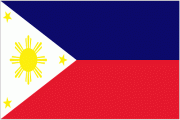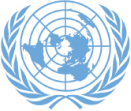I wish to thank you for convening this Open Debate on trafficking in persons in conflict
situations. I also wish to thank our briefers for their informative presentations.
Mr. President,
The problem of trafficking in persons in conflict situations is multi-faceted. It invariably
cuts into other equally pressing issues such as migration, counter-terrorism, genderbased
violence, money laundering, poverty alleviation, and the protection of children.
The multi-faceted nature of trafficking in persons in conflict situations therefore
requires a multi-faceted response - one that seeks to understand the problem from a
political, socio-economic, even cultural perspective, and brings together government, civil
society and the private sector in both the domestic and international fronts.
The Philippines considers trafficking in persons, including in conflict situations, a core
national concern. Allow me to share some initiatives that the Philippines and our partners
have undertaken in this area:
1. The Philippines, with 10 percent of its close to 104 million population being migrants,
has made the protection of Filipino migrants one of its foreign policy pillars. The
Philippines' experience in migration and human trafficking has led us to pursue efforts
for the de-criminalization of victims of human trafficking for acts directly arising from
their situation as trafficked persons, regardless of nationality, immigration status, and
initial consent to being trafficked, or other personal circumstances. Victims of human
trafficking must be accorded equal access to justice in countries where they find
themselves in, regardless of their immigration status.
The Philippines, together "~ith the United States, is working to bring this issue of
migrants and human trafficking to the forefront through the Migrants in Countries in
Crisis Initiative, a voluntary government-led multi-stakeholder consultative initiative to
improve responses for migrants in countries experiencing conflict or natural
disaster. It covers migrants in conflict situations who are vulnerable to human
trafficking.
2. A solid legal framework coupled with strong institutions capable of implementing the
relevant regulations is also essential. The Philippines has established a
4/6
comprehensive mechanism to protect Filipino migrants based upon a framework of
laws, regulations, policies and programs, and institutions using a migrant-centered
approach to the entire migration cycle - from pre-employment, transit, on-site
employment, return migration and eventual reintegration. The combined effect has
resulted in the successful prosecutions of perpetrators of human trafficking.
Furthermore, the Philippines' 3rd National Strategic Action Plan Against Trafficking in
Persons aims to establish a clear system that links all processes -- from intervention,
prevention, protection, and investigation to prosecution -- that would result to a better
implementation of existing policies and programs and the formulation of more strategic
ones, and reinforced by a comprehensive monitoring and evaluation framework to
track progress.
3. Adopting a one-country tP.Dm and multi-stakeholder approach has proven to be
effective. This consolidates the mandates, efforts, resources and interests of the duty
bearers and stakeholders - namely, civil society organizations, faith-based groups,
and the private sector, as well as national and local agencies in the bureaucracy - in
coming up with a robust response. For the Philippine Government, this has also
enabled us to mainstream the interventions down to the grassroots level by activating
local structures such as the City and Municipal Councils Against Trafficking And
Violence Against Women And Children, and the Barangay Council for the Protection
of Children.
A multi-stakeholder approach also promotes awareness of the problem and
challenges at the local, national and global levels.
4. In the context of counter-terrorism, it is important to examine trafficking corridors and
the business flow of trafficking to:
a. Strategically locate victims and traffickers in the entire process, and build systems
and structures, such as effective victim identification, at critical points of
intervention where victims are the most visible and can be rescued;
b. Identify critical points ;r. the business flow where we can deal the strongest blow
to the operations of trafficking syndicates. This requires for example, financial
investigations in partnership with the anti-money laundering council, and digital
forensics in collaboration with internet service providers.
c. Expose new means employed by traffickers, and develop strategies and programs
to specifically arrest such means.
5. In the socio-economic context and as a prevention measure against violent
extremism, poverty alleviation programs targeting conflict-torn areas should integrate
trafficking in persons as an indicator. These programs should promote resiliencies at
the household level by ensuring that persons in armed conflicts have access to
economic services and opportunities, making them less vulnerable to trafficking.
6. The matter of the use of children for armed conflict, where young men and boys are
recruited into civilian armed groups, rebel groups and at times by the military as
informants, is of particular concern to the Philippines. This is one area where armed
5/6
conflict and unstable peace and order situations increase the vulnerabilities of children
and youth. Government's efforts are focused mainly on expanding prevention efforts
against the recruitment a. 11.l use of child soldiers, vigorously investigating allegations
and holding the perpetrators accountable, and reinforcing the capability of front-line
officers on appropriate methods to assist children apprehended from armed groups.
7. The Philippine recognizes that trafficking in persons also involves issues of genderbased
violence. To address this, programs, including humanitarian interventions, that
aim to directly address the needs of trafficked persons in conflict situations must be
instituted. During the siege of the city of Zamboanga in southern Philippines in 2013,
the Philippine Government activated a structure called the Gender-Based Violence
Cluster composed of law enforcers and social welfare service providers that
specialized in gender issues. The Cluster served to address the needs of women and
children in conflict situations, especially in terms of mitigating vulnerabilities to sexual
violence and trafficking. Services included access to protective information, to
psychosocial and trauma-informed care and to protective custody, and access to
economic advancement such as education, employment and enterprise.
8. People from conflict zones will find means to migrate to safer communities. Traffickers
tend to leverage on this to transport their victims. The challenge is for government to
accumulate data on such movements in order for it to develop appropriate policy and
programs. If an interventi.-;r1 is to be developed, there must be, apart from policy, a
mulit-sectoral coordination mechanism involving stakeholders along the trafficking
transport route to stop trafficking as it happens.
Mr. President,
The Philippines' greatest challenge today in the issue of trafficking in persons in
conflict situations is the lack of accurate data to measure the extent of this problem. This
is where the United Nations and cooperation with Member States can greatly help. We
welcome the recommendation in the Secretary General's report for UNODC to lead in the
development of a data collection system and for Member States to submit information in
this regard. From the Philippines' point of view, Member States can benefit from an
international structure that integrates and shares intelligence, studies and mechanisms
that would help identify, quantify and assess the prevalence of trafficking in persons in
conflict areas. This same structure could also provide expert advice and technical
assistance to Member States in the formulation, implementation and validation of
programs, such as the national action plan, so that national initiatives are responsive and
effective.
With comprehensive and c-ccurate data on hand, Member States can develop,
implement and enforce the appropriate laws, policies and programs to prosecute
perpetrators, and provide the necessary assistance to victims.
I thank you, Mr. President.
* * *


